College Sports
NIL is changing college sports; for better or worse?
HUNT VALLEY, Md. (TNND) — It’s been nearly four years since the NCAA enacted a new policy allowing college athletes to profit from their name, image and likeness, and just a few weeks since a federal judge opened the door for college athletic departments to pay athletes directly. Much of the details are still being […]
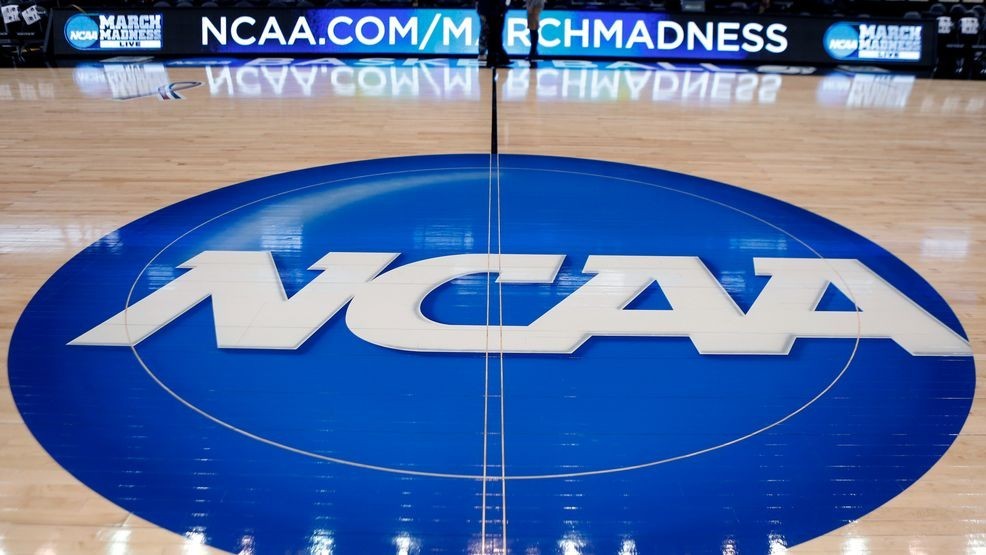
HUNT VALLEY, Md. (TNND) — It’s been nearly four years since the NCAA enacted a new policy allowing college athletes to profit from their name, image and likeness, and just a few weeks since a federal judge opened the door for college athletic departments to pay athletes directly.
Much of the details are still being worked out in the courts. Key components like roster limits, scholarship limits and payment pools are still up in the air.
As is a governing body to oversee all of these new rules, since most current regulation is a patchwork of state laws, legal settlements and NCAA rules.
But, we are starting to see the impacts of college athletes getting paid – and what it means for the enterprise as a whole.
Depending on who you ask, the historical shift is: long overdue for athletes who’ve spent thousands of hours grinding for their craft; late to the party in terms of global sports; the official death certificate for amateurism and the “student” side of “student-athlete”; or, an inevitable reality that has to run wild before it gets reined in and regulated.
To the league itself, it’s a positive step.
When a judge granted preliminary approval for a framework for schools to pay athletes, NCAA President Charlie Baker said it would “help bring stability and sustainability to college athletics while delivering increased benefits to student athletes for years to come.”
The push for college athletes to get paid spans decades, with legal challenges and legislative efforts dating back to at least the early 2000s. Which is surprising, considering the NCAA has been a multi-million dollar industry for several decades, and a multi-billion dollar industry for about a decade.
That disparity is due to the idea of “amateurism,” a word many experts and analysts use when they cite concerns about completely commercializing college sports. That idea goes back more than a century, to 1800s England, where sports were only for the wealthy, and the working class didn’t want them to be able to pay their way to victory.
“I don’t want to say [amateurism] is going to die, but it will certainly be the commercial aspects that are going to permeate,” said David Hedlund, the chairman of the Division of Sport Management at St. John’s University. “I think we’re going to see and hear less and less about amateurism, and college sports are going to look more like professional sports, or a training ground for professional sports.”
The idea that sports are for enjoyment and the love of the game rather than money is a noble one. And players can love the game and make money off their talents at the same time.
But many experts say amateurism has long been dead; the NCAA was just, for whatever reason, the last organization behind the International Olympic Committee to let it die. It’s part of an effort to keep pace with the rest of the world. Overseas soccer and basketball players are spotted when they’re 12 to 14 years old, and go pro when they turn 18.
“We’re in a global marketplace,” said Matt Winkler, a professor and program director of sports analytics and management at American University. “We sort of have to keep up with the other nations if we want to strive and have those great moments in sports for our Olympic teams and our World Cup teams and so forth.”
Coaches have long been compensated, and universities have long profited off their sports teams.
“The money has always been there. It’s just a lot more front-facing now, I think, than it’s been in the past,” Hedlund said.
Some sports analysts say it was quite front-facing in this year’s NCAA Men’s Basketball Tournament.
March Madness was devoid of any significant upsets or Cinderella teams. For the first time in five decades, every team that made it to the Sweet 16 came from a power conference, including all four No. 1 seeds and all but one No. 2 seed.
And, every team that made it to the Final Four was a No. 1 seed.
ESPN analyst Stephen Smith said NIL deals and the now no-limits transfer portal are to blame for why mid-major programs didn’t see much success, and top-tier schools prevailed.
“If there was no NIL, if there was no portal and you have the mid-majors go 0-6 in the second round, please, we ain’t sweating that,” Smith said. “But when you’re able to point to rules that have been implemented that ultimately shows itself to have inflicted upon the game itself, that’s dangerous.
“College basketball as we knew it – which, to me, is all about March Madness – will cease to exist. Because there’s no madness.”
Experts say there is a serious question mark about the current state of how much colleges can pay to entice players, and how many times players can be enticed enough to transfer.
But not all believe it has to be the death of March Madness or competition in college sports. After all, there’s still Division 2 and 3 universities.
Richard Paulsen, a sports economist and professor at the University of Michigan, said it’s hard to gauge the impact of NIL deals and the transfer portal on competition. Because while the top ten or so power schools may be able to offer the most money to the elite players, there’s still a lot of talent out there.
“The top schools have an advantage in getting the A-level talent, but some of the players that might have sat on the bench at a top school previously could be enticed away with NIL money coming from a second tier school,” Paulsen said. “So I think the impact on competitive balance is maybe a little bit less clear.”
Paulsen says, as a professor, he is worried about the impact NIL deals – particularly million-dollar ones – can have on the students themselves, some 18, 19, 20 years old. It raises the question, does a teenager or young adult need this much money?
Shedeur Sanders is 23 years old, and his NIL valuation at the University of Colorado was roughly $6.5 million. Granted, he’s the son of NFL Hall of Famer and head coach for Colorado Deion Sanders.
But, his 2024 stats were top five in completion percentage, passing touchdowns and yards. Several analysts had him as the top prospect in the 2025 NFL draft, but he slid down to the fifth round, shocking much of the sports world.
Various reports place blame on other reasons – maybe he took more sacks than he should have, maybe NFL executives see traits we can’t see, maybe he bombed interviews with the managers, maybe it had to do with his Hall of Famer dad. And he certainly wouldn’t be the first prospect to get picked later than expected and prove all the teams that passed over him wrong.
But, he’s also losing money by going pro. The iced out, custom “Legendary” chain he wore on Draft Day reportedly cost $1 million.
“It is at least worth noting that five years ago, he wouldn’t have had the online presence that he had, and that could have turned off some NFL teams,” Paulsen said. “Without being in the rooms, I don’t know if it did, but that is possible, and it’s not something that would have been possible even five years ago.”
It begs the question, is it even worth going pro for these top-tier college athletes with insane NIL deals?
In the NBA, new data shows it may not be. The league announced last week just 106 players declared early for the 2025 draft. It’s the fewest since 2015. The number typically hovers around 300.
The drop in early entrants could be lingering effects of the extra COVID year.
But, next year, ten schools will pay their rosters somewhere in the neighborhood of $10 million, including several million dollars per top player. That’s far more than the players would make if they were a second-round draft pick in the NBA.
Winkler said the combination of competitive rosters and the scope of these NIL deals has more to do with this drop in early declarations.
“These deals are getting so big that unless you’re going to be a first round draft choice, maybe if you’re going to be kind of a lottery pick or a top 10, 15 pick, it would be better for you to exhaust your eligibility on a major team, because you’re going to make more,” he said.
So, it might be financially advantageous for athletes to wait on the pros. Some announcers were even suggesting Sanders should go back to college if the NFL didn’t deem him ready for the show. (NCAA rules prohibit him from doing so anyway; he declared for the draft and signed with an agent).
But what about the fact that these players, who become millionaires, are still students?
Schools are working to provide resources for these athletes so they can get advice on what to do with their wealth, so that they don’t spend it irresponsibly. Which is not to assume all of them would; it goes without saying this money could greatly benefit an athlete who grew up in poverty and change the trajectory for his/her family.
But Paulsen says he worries about the “student” side of “student-athlete” when we start talking about millions upon millions of dollars and students transferring to whichever school offers them the most. Sometimes credits don’t transfer; sometimes players could feel pressure to fulfill their NIL commitments over their studies, when the stakes are that high.
At a young age, these players are under an unprecedented amount of pressure, from their coach, from their family, from their financial adviser, from social media, from broadcast exposure, from stakeholders, from the tens of millions of people who can now legally bet on them.
“Players should be able to leave bad situations, absolutely, and I certainly support players’ autonomy and chasing financial benefit from their athletic talents,” Paulsen said. “But if we’re going to call them student athletes, we should have some emphasis on the student part of that too. Some of these rules that are helping the athlete are hurting the student.”
One of those rules, he says, is the transfer portal. But in addition to harming the students’ academic careers, experts say this also takes a toll on teams and fans of those teams.
Take Nico Iamaleava for example. The star quarterback abruptly parted ways with Tennessee over an alleged compensation dispute with the school’s collective. He demanded an NIL readjustment to $4 million to keep playing for the Vols, and when they said no, he transferred to UCLA, though it’s unclear if they met his demands.
The exit shocked his teammates in Knoxville, with one of his receivers and defensive backs, Boo Carter, telling reporters, “He left his brothers behind.”
But the new pay-to-play system does also beg the question of school loyalty, not just for the players, but the fans too.
Paulsen says roster continuity, players spending all four years playing for one team, has been an endearing feature of sports like women’s college basketball, when you look at the legacies, for example, Caitlin Clark built at the University of Iowa, or Paige Bueckers at the University of Connecticut.
“I do think there’s definitely some extent to which all this player movement can have negative consequences,” he said.
But, some experts doubt fans of teams need to see the same or similar team year to year.
After all, this past NCAA Men’s March Madness Championship between Florida and Houston – the one ESPN’s Smith said featured no madness at all – scored 18.1 million viewers on CBS. That’s up 22% from last year’s championship, and the biggest audience since 2019.
The Final Four games, featuring all No. 1 seeds, ranked as the most-watched games in eight years.
In other words, so far, so good when it comes to college sports fandom.
One thing broadly agreed upon among experts is that competition must remain intact. The Florida-Houston matchup was a nailbiter.
“The biggest thing that would kill sports is if there is no competitive balance,” Hedlund said. “It is known when you have a really great team being a not-so-great team, if the great team probably will win, people don’t want to watch.”
People still appear to be watching. If they stop, one could assume the NCAA would change its course, or it’d be out of all its money too.
Plus, these experts expect regulation soon – possible measures like transfer restrictions, collectively bargained salary caps, conference realignment to avoid concentration, turning athletic departments into LLCs, putting degree completion into bylaws and evening out the number of roster spots, among other rules.
Experts say: be patient, wait for the legal fights to run their course, and wait for the brightest minds in sports – and Congress – to come up with a solution that pleases the players, teams, coaches, schools and fans.
“This is fundamental to the success of sports, so we just need to figure out what rules, what regulations, what governing bodies, how do we facilitate this?” Hedlund said. “We don’t want to ruin sports. That’s what’s at stake here.”
Winkler says it all comes down to the most “hardcore” stakeholders: fans and alumni. If the SEC and Big 10 just ganged up and created their own Premier League and college sports turned into checkbook sports, it could threaten that school pride.
“This year, we definitely saw cracks in the system,” Winkler said. “If the best athletes just go to the top, are [fans] rooting for an inferior product? Are they still going to have that affinity for their school, their team, their degrees, and people that are doing it? This is really going to test that.
“[Schools] have two key pressure points: keep getting a lot of money from TV so you can fund your athletic department, and keep alumni, fans and donors still feeling as engagedThere’s a lot to be worked out in the next several months and probably the next year to really get a boiler plate idea of what the rules and regulations need to be.”
College Sports
Texas beats Texas Tech 10-4 in decisive 3rd game of WCWS to win its 1st national championship
OKLAHOMA CITY — Finally, Texas has broken through. Mia Scott hit a grand slam, Teagan Kavan won again and Texas defeated Texas Tech 10-4 in Game 3 of the Women’s College World Series championship series on Friday night to claim its first national title. Texas had lost to Oklahoma in the championship series two of […]
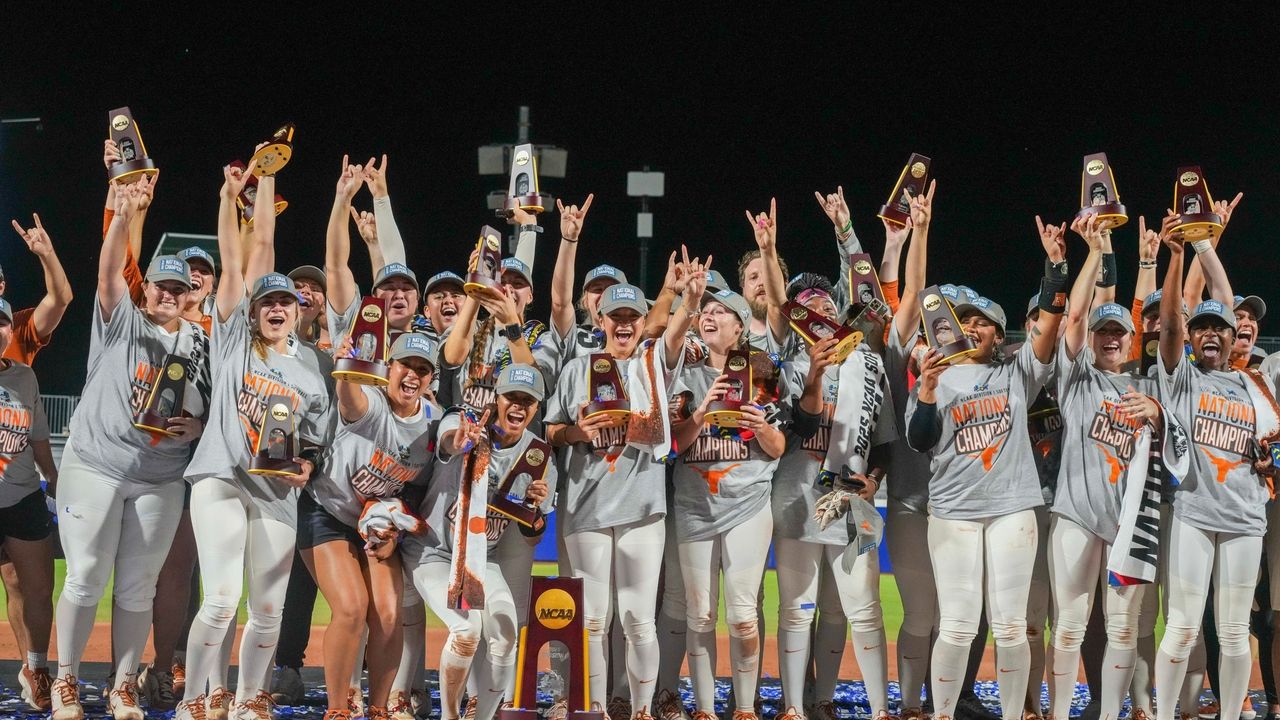
OKLAHOMA CITY — Finally, Texas has broken through.
Mia Scott hit a grand slam, Teagan Kavan won again and Texas defeated Texas Tech 10-4 in Game 3 of the Women’s College World Series championship series on Friday night to claim its first national title.
Texas had lost to Oklahoma in the championship series two of the previous three years. Oklahoma was one of the teams Texas beat on its way to the championship. And Texas coach Mike White finally won in his ninth World Series trip between his coaching stints at Oregon and Texas.
“I’m still trying to process the whole thing,” White said. “Actually, it’s something you dream about.”
Kavan, a sophomore, allowed no earned runs in all 31 2/3 innings she pitched at the World Series. She went 4-0 with a save in the World Series for the Longhorns and was named Most Outstanding Player.
She was happy to win it for White in the Longhorns’ first year playing in the Southeastern Conference.
“Without coach White, I don’t know if we’re here,” she said. “He’s the best. He’s so competitive. He wants it just as bad as we do, of course. And he pushes us to be better every day. He makes me a better pitcher mentally and physically. And so there’s no one else I’d rather play for. He’s the bomb, and I’m glad we got it done for him.”

Texas’ Reese Atwood celebrates after the Longhorns score during the third game of the NCAA softball Women’s College World Series finals against Texas Tech in Oklahoma City, Friday, June 6, 2025. Credit: AP/Kyle Phillips
Leighann Goode hit a 3-run homer, Kayden Henry had three hits and Scott, Reese Atwood and Katie Stewart each had two hits for Texas (56-12).
Texas Tech star pitcher NiJaree Canady, who had thrown every pitch for the Red Raiders through their first five World Series games, was pulled after one inning in Game 3. The two-time National Fastpitch Coaches Association Pitcher of the Year gave up five runs on five hits and only threw 25 pitches. The loss came after she signed an NIL deal worth more than $1 million for the second straight year.
Not even support from former Texas Tech football star Patrick Mahomes and his wife, Brittany, who were in attendance, could put the Red Raiders (54-14) over the top.
Canady’s night started like many of her others, as she struck out the first batter she faced. After that, she didn’t resemble the pitcher entered the game leading the nation in wins and ERA. Goode’s homer in the first put the Longhorns up 5-0.

Texas pitcher NiJaree Canady celebrates after throwing a strikeout during the third game of the NCAA softball Women’s College World Series finals against Texas in Oklahoma City, Friday, June 6, 2025. Credit: AP/Kyle Phillips
Texas Tech coach Gerry Glasco said he was pleased with Canady’s effort throughout the season, but he pushed her a bit too far.
“If I had a game in two days, that’s who I want beside me to go to war with,” he said. “She’s an unbelievable talent.”
Scott’s blast came in the fourth inning and gave Texas a 10-0 lead.
Hailey Toney was a bright spot for the Red Raiders. She singled to knock in two runs in the fifth, then singled to knock in another run in the seventh.
It was a surprise run for the Red Raiders. Glasco left Louisiana to coach at Texas Tech this season. The team only had three returning players and had to mix a group of newcomers together.
They won the Big 12 regular season and tournament titles and reached the World Series for the first time.
“To end up in this position, playing for the national title, making it go all the way to three games — just a historic season, and I’m really proud of my team and the effort that they give us from top to bottom,” Glasco said.
College Sports
Fisk expected to discontinue trailblazing HBCU gymnastics team
The HBCU gymnastics world will soon be down to one team following the 2026 season as Fisk announced they will discontinue their gymnastics program, according to a report by College Gym News. “While we are tremendously proud of the history our gymnastics team has made in just three years, we look forward to focusing on […]
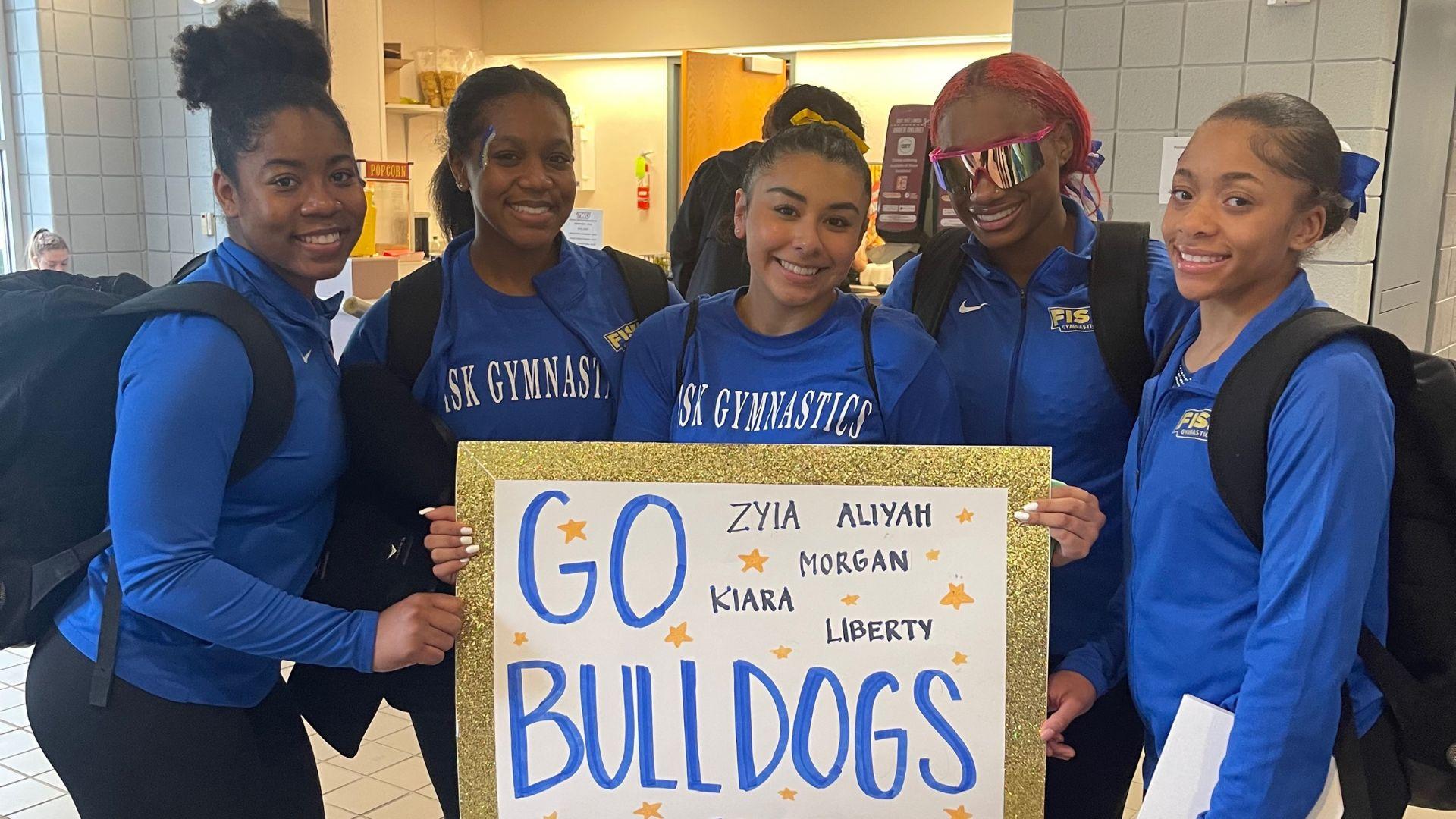
The HBCU gymnastics world will soon be down to one team following the 2026 season as Fisk announced they will discontinue their gymnastics program, according to a report by College Gym News.
“While we are tremendously proud of the history our gymnastics team has made in just three years, we look forward to focusing on our conference-affiliated teams to strengthen our impact in the HBCU Athletic Conference,” said Fisk Director of Athletics Valencia Jordan. “Fisk is grateful for the hard work, dedication, and tenacity of its gymnasts, staff members, and coaches who made this program possible.”
Fisk was the first HBCU to announce a gymnastics program in 2023, followed by Talladega College and Wilberforce University.

Morgan Price, the 2024 HBCU Sports Female Athlete of the year, won a national championship at Fisk but has since transferred to the University of Arkansas for her final year of eligibility.
College Sports
Former Tennessee football coach Derek Dooley eyes GOP Senate run against Jon Ossoff in Georgia
DALTON, Ga. — Derek Dooley, a former University of Tennessee football coach, said Friday that he is considering a Republican run for U.S. Senate in Georgia in 2026 against Democratic incumbent Jon Ossoff. The trial balloon shows how Gov. Brian Kemp’s decision not to run for the seat has left Georgia Republicans looking for other […]
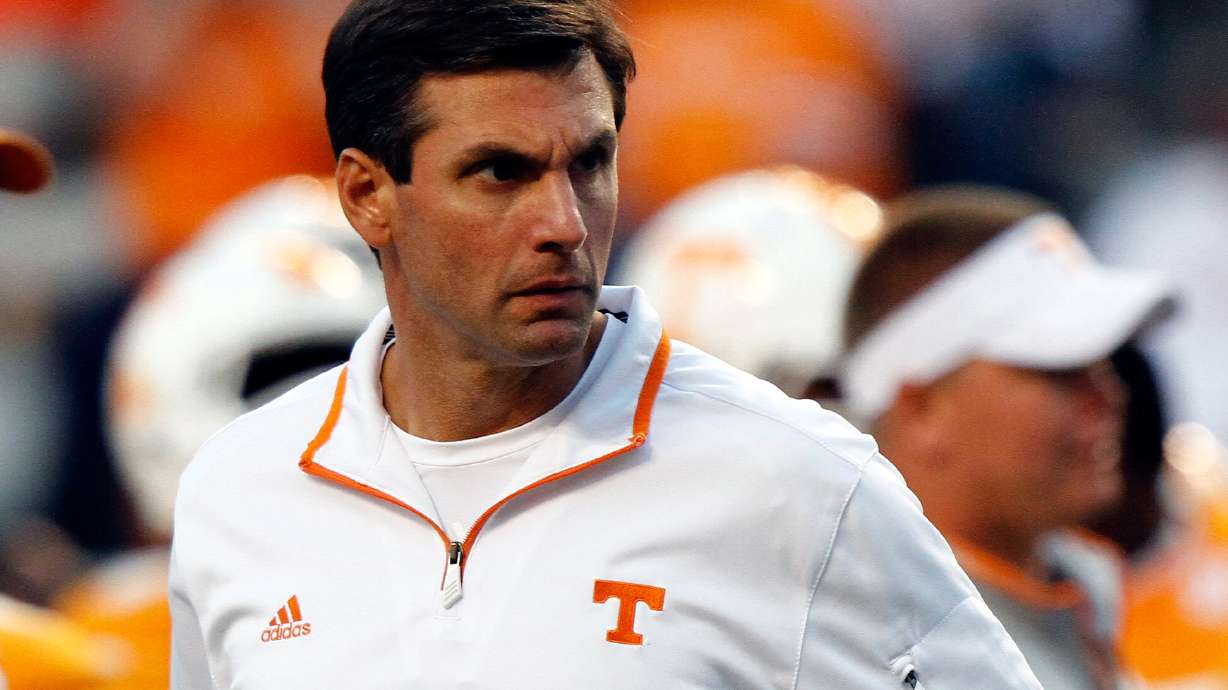
DALTON, Ga. — Derek Dooley, a former University of Tennessee football coach, said Friday that he is considering a Republican run for U.S. Senate in Georgia in 2026 against Democratic incumbent Jon Ossoff.
The trial balloon shows how Gov. Brian Kemp’s decision not to run for the seat has left Georgia Republicans looking for other options to face off against Ossoff, considered the most vulnerable Democratic incumbent up for reelection next year.
Dooley, 56, said he would decide on a bid in coming weeks.
“Georgia deserves stronger common-sense leadership in the U.S. Senate that represents all Georgians and focuses on results — not headlines,” Dooley said in a statement. “I believe our state needs a political outsider in Washington — not another career politician — to cut through the noise and partisanship and get back to real problem solving.”
The announcement, first reported by The Atlanta Journal-Constitution, came as other declared candidates stumped before the state Republican convention in the northwest Georgia city of Dalton. Among Republicans who have declared their candidacies are U.S. Rep. Buddy Carter, Insurance Commissioner John King and activist Reagan Box.
Other Republicans who could run include U.S. Reps. Mike Collins and Rich McCormick, Secretary of State Brad Raffensperger and state Sen. Greg Dolezal.
Attacks on Ossoff were among the most reliable applause lines during Friday afternoon speeches at the convention.
“Folks, President Trump needs backup, he needs backup in the Senate,” King said.
Dooley has never run for office before. His appeal wouldn’t be based on his career 32-41 record at Louisiana Tech and Tennessee, but his status as the son of legendary University Georgia coach Vince Dooley and Kemp’s long ties to the Dooley family.
As a teenager, Kemp was a frequent guest in the Dooley home, and roomed with Derek’s older brother, Daniel Dooley, at the University of Georgia. Kemp has the most effective Republican political organization in Georgia, and he would likely give Dooley a big credibility boost.
Kemp and President Donald Trump have been trying to agree on a mutual candidate to back for Senate in 2026, hoping to avoid the conflict that plagued Kelly Loeffler’s unsuccessful run, where she lost to Democrat Raphael Warnock in a 2021 runoff. That, along with Republican David Perdue’s loss to Ossoff on the same day handed control of the U.S. Senate to Democrats. Trump had preferred then U.S. Rep Doug Collins instead of Loeffler.
Then in 2022, Trump anointed Georgia football legend Herschel Walker as the Republican nominee, but Warnock turned back Walker’s flawed candidacy in another runoff. Kemp only swung in to help Walker in the runoff.
The effort to screen 2026 candidates has already produced some results, with U.S. Rep. Marjorie Taylor Greene saying she wouldn’t bring her right-wing positions to the Senate campaign trail.
Dooley would be far from the first sports figure to run for office. His father was frequently discussed as a possible candidate, but never took the plunge. But other coaches have gone far. Former Auburn University football coach Tommy Tuberville was elected to the Senate in 2020 from Alabama and is now running for governor. Former Ohio State University coach Jim Tressel is currently that state’s lieutenant governor. And University of Nebraska coaching legend Tom Osborne served three terms in the U.S. House.
Dooley walked on in football at the University of Virginia and earned a scholarship as a wide receiver. He earned a law degree from the University of Georgia and briefly practiced law in Atlanta before working his way up the college coaching ladder, becoming head coach for three years at Louisiana Tech and then moving on to Tennessee.
Dooley recorded three consecutive losing seasons in Knoxville before he was fired in 2012 after losing to in-state rival Vanderbilt.
After that, he has worked as an assistant coach for the NFL’s Miami Dolphins and Dallas Cowboys, the University of Missouri and the New York Giants. Most recently, Dooley was an offensive analyst with the University of Alabama.
College Sports
Fisk To Discontinue Nation’s First HBCU Gymnastics Program In 2026
LAS VEGAS, NV – JANUARY 06: Fisk University gymnasts cheer on their teammate during a meet at the … More Orleans Arena on January 6, 2023 in Las Vegas, Nevada. (Photo by Stew Milne/Getty Images) Getty Images In 2023, Fisk University made history as the first Historically Black College or University (HBCU) to sponsor women’s […]
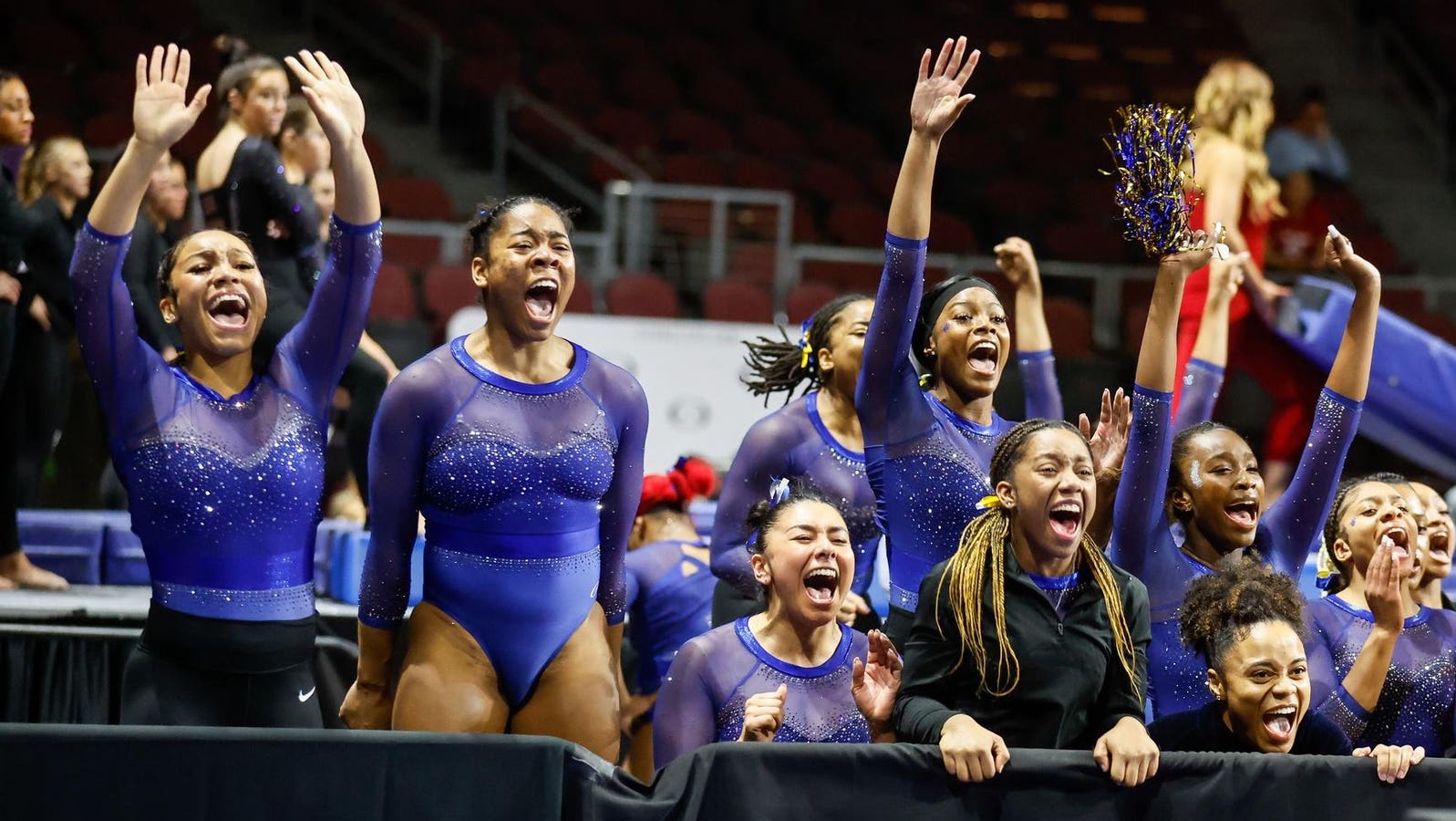
LAS VEGAS, NV – JANUARY 06: Fisk University gymnasts cheer on their teammate during a meet at the … More
Getty Images
In 2023, Fisk University made history as the first Historically Black College or University (HBCU) to sponsor women’s gymnastics. However, the university announced Friday that the historic program will be discontinued.
In an email delivered to the student body, university officials shared their decision to discontinue the gymnastics program at the close of the 2025-2026 gymnastics season.
The university cited scheduling issues and recruitment disadvantages as factors influencing the decision. Though Fisk and Wilberforce University presently sponsor women’s gymnastics, the sport is not sanctioned within the HBCU Athletic Conference (HBCUAC).
The decision to cut Fisk’s program also comes after significant personnel changes.
In May, star gymnast Morgan Price announced her intent to transfer from Fisk for her final season of eligibility, instead signing with the Arkansas Razorbacks of the powerhouse Southeastern Athletic Conference. Price led Fisk gymnastics since its founding, claiming back-to-back national championships and delivering the first perfect ten in HBCU gymnastics history.
Price’s departure was one of two to shake the historic HBCU team in 2025. One month into the team’s season, Head Coach Corrinnne Tarver resigned. Tarver had been at the helm since the program’s founding in 2022.
Despite the notable departures, Friday’s news shocked many athletes, alumni, and fans. The 2025 season was a historic one for the Bulldogs. In addition to Price’s five national titles, the team set a program record and notched seven All-America honors.
CORVALLIS, OREGON – MARCH 21: Morgan Price of the Fisk Bulldogs competes on the floor exercise … More
Getty Images
In response to the news, recent Fisk graduate Naimah Muhammad took to Instagram to express disappointment for her teammates and program.
Muhammad particularly disagreed with the university’s reasoning. While the gymnast felt that she could accept financial rationale, the claim surrounding sanctioning struck a nerve—and rightly so.
“The reason gymnastics is not an HBCU-sanctioned sport…is (because) there’s never been HBCU gymnastics before Fisk,” Muhammad said.
“HBCU Gymnastics started because of Fisk,” she added.
When Fisk jumped at the opportunity to make history in 2022, many hoped that multiple HBCU programs would follow suit. Unfortunately, the period following the historic announcement has been tumultuous.
In 2024, Talladega College joined Fisk as the second HBCU to sponsor a women’s gymnastics team. However, months later, the program was cut due to budget issues.
Wilberforce University joined Fisk this past NCAA season as one of two active programs. Sadly, at the close of the 2026 season, Wilberforce may be the only program standing. Fans hope Wilberorce’s program outlasts its predecessors, and the university encourages them to support the Fisk athletes in their final season.
Despite the recent news, Muhammad attests that the fervor for HBCU gymnastics remains strong. “Y’all don’t know how many [direct messages] I get every single day – from parents, alumni, and gymnasts,” she said.
They all ask – “How do I get my daughter to go to Fisk Gymnastics?”
College Sports
Texas Tech pitcher NiJaree Canady signs a second $1 million-plus NIL deal, AP source says
Texas Tech pitcher NiJaree Canady signs a second $1 million-plus NIL deal, AP source says – myMotherLode.com Link 1
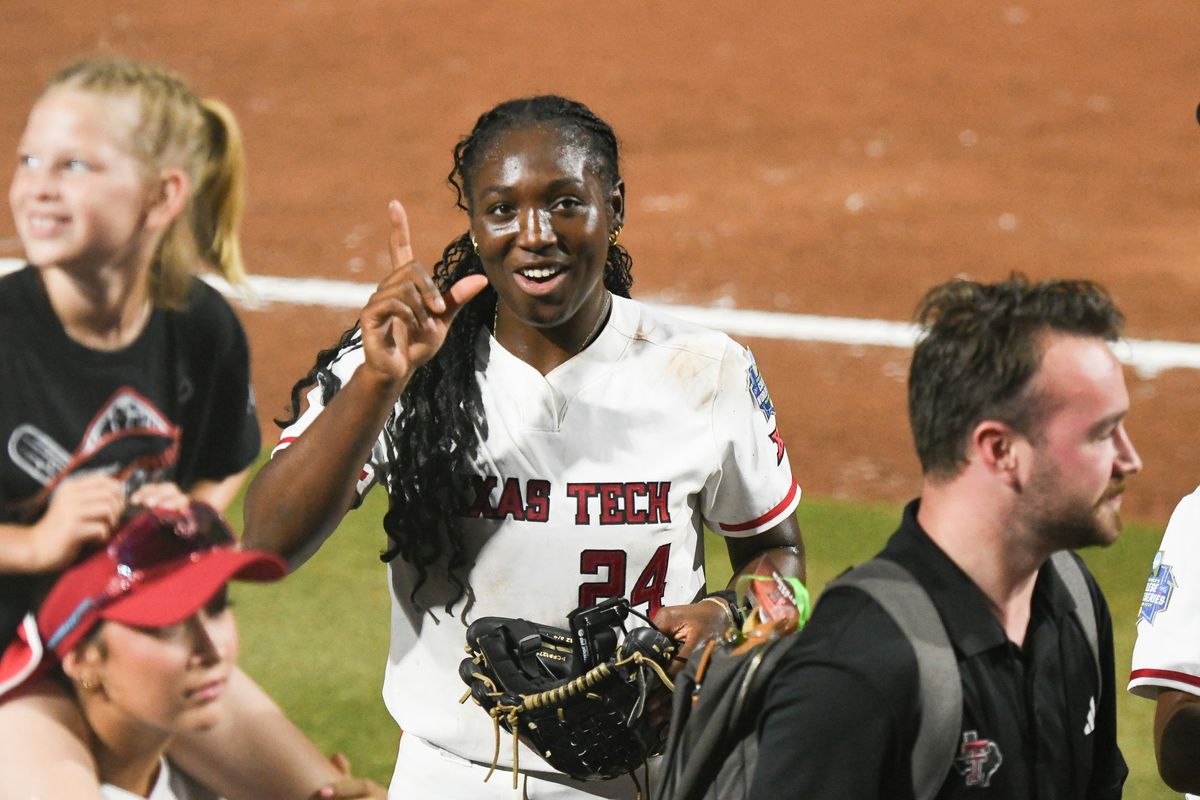
College Sports
Rhode Island college graduate Timothy Howard died from allergic reaction days after receiving diploma
A 22-year-old “kind-hearted” Rhode Island college graduate died after consuming a snack contaminated with a common allergen — just days after he received his diploma. Timothy Howard, a communication studies student from the University of Rhode Island, died on May 24 after having a severe allergic reaction to peanuts, his mother, Patty Howard, shared in […]

A 22-year-old “kind-hearted” Rhode Island college graduate died after consuming a snack contaminated with a common allergen — just days after he received his diploma.
Timothy Howard, a communication studies student from the University of Rhode Island, died on May 24 after having a severe allergic reaction to peanuts, his mother, Patty Howard, shared in an emotional Facebook post.
“It is with heavy hearts we share the loss of our son Timmy to a severe anaphylactic reaction to peanuts,” she wrote. “We just celebrated his college graduation and he had his whole life ahead of him. Our hearts are broken and we now have joined a club no one wants to be apart (sic) of.”
The heartbroken mother added that she’s taking the aftermath of the shocking incident “one day at a time.”
“It is not goodbye forever it is until we meet again!” she added. “We will always love our Timmy.”
Howard earned his degree from the University of Rhode Island on May 16.
Howard’s father, Tim, claimed the severe anaphylactic reaction happened when the post-grad ate a late-night snack that was contaminated with peanuts, according to WJAR.
“He came in and woke us up, and said that he couldn’t breathe, and at that point, it unfolded very quickly over a matter of minutes,” his father told WJAR. “And we administered multiple EpiPens. The reaction was too far gone.”
His parents are unsure about how much of the contaminated snack he consumed.
Howard’s frat brothers at Phi Kappa Psi have started a fundraiser for FARE, the Food Allergy Research and Education organization, to “Prevent other families from facing similar tragedies.”
“Timmy was just beginning what promised to be a remarkable journey in life,” the fundraiser page set up by his fraternity claimed. “He was driven, kind, and deeply loved by family, friends, and everyone who had the joy of knowing him. He had so much ahead of him, and he approached life with a rare kind of kindness and light. He was the person you could always count on to listen—really listen.”
The fundraiser surpassed its goal of $25,000.
Howard, who grew up in Southborough, Mass., was remembered as a “genuinely kind-hearted, humble, loving and empathetic soul” who had a “passion for sports.”
“He had a love of life and especially loved hanging out with his close high school friends and cousins and his Phi Kappa Psi frat brothers at URI,” his obituary stated. “Timmy deeply cherished growing up on a cul-de-sac with his “Foley Crew” of buds who have remained his brothers throughout his life.”
A memorial service happened on May 30 in Brewster, Mass.
Howard is survived by his parents, sister, grandmother, and extended family.
-

 College Sports3 weeks ago
College Sports3 weeks agoPortal Update – Basketball and Gymnastics Take Hits
-

 College Sports3 weeks ago
College Sports3 weeks agoPortal Update – Basketball and Gymnastics Take Hits
-

 Professional Sports2 weeks ago
Professional Sports2 weeks agoJon Jones answers UFC retirement speculation as fans accuse champion of 'holding the belt …
-

 Health3 weeks ago
Health3 weeks agoBYU women's basketball guard injures ACL twice
-

 NIL2 weeks ago
NIL2 weeks ago2025 NCAA Softball Tournament Bracket: Women’s College World Series bracket, schedule set
-

 Youtube2 weeks ago
Youtube2 weeks agoXavier Legette taught Marty Smith his signature celly 🙌
-

 College Sports3 weeks ago
College Sports3 weeks agoNCDC Commitment Profiles: Cyclones’ Martins Moving On to Saint Anselm College • USPHL
-

 High School Sports2 weeks ago
High School Sports2 weeks agoToday in the MHSAA
-

 College Sports3 weeks ago
College Sports3 weeks agoIU basketball recruiting
-

 Motorsports2 weeks ago
Motorsports2 weeks agoWhy IHOP Rode With Dale Earnhardt Jr. In Amazon NASCAR Debut


































